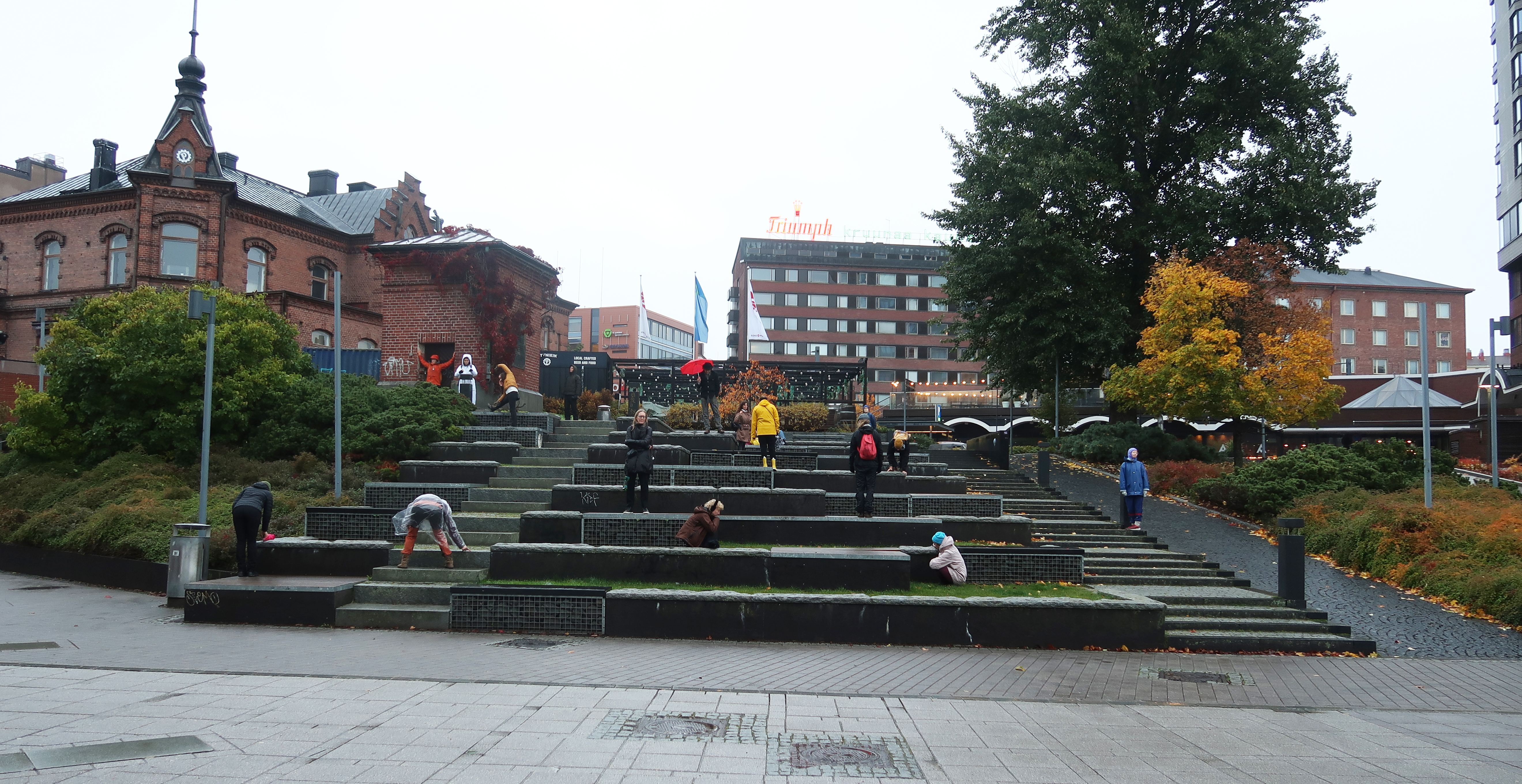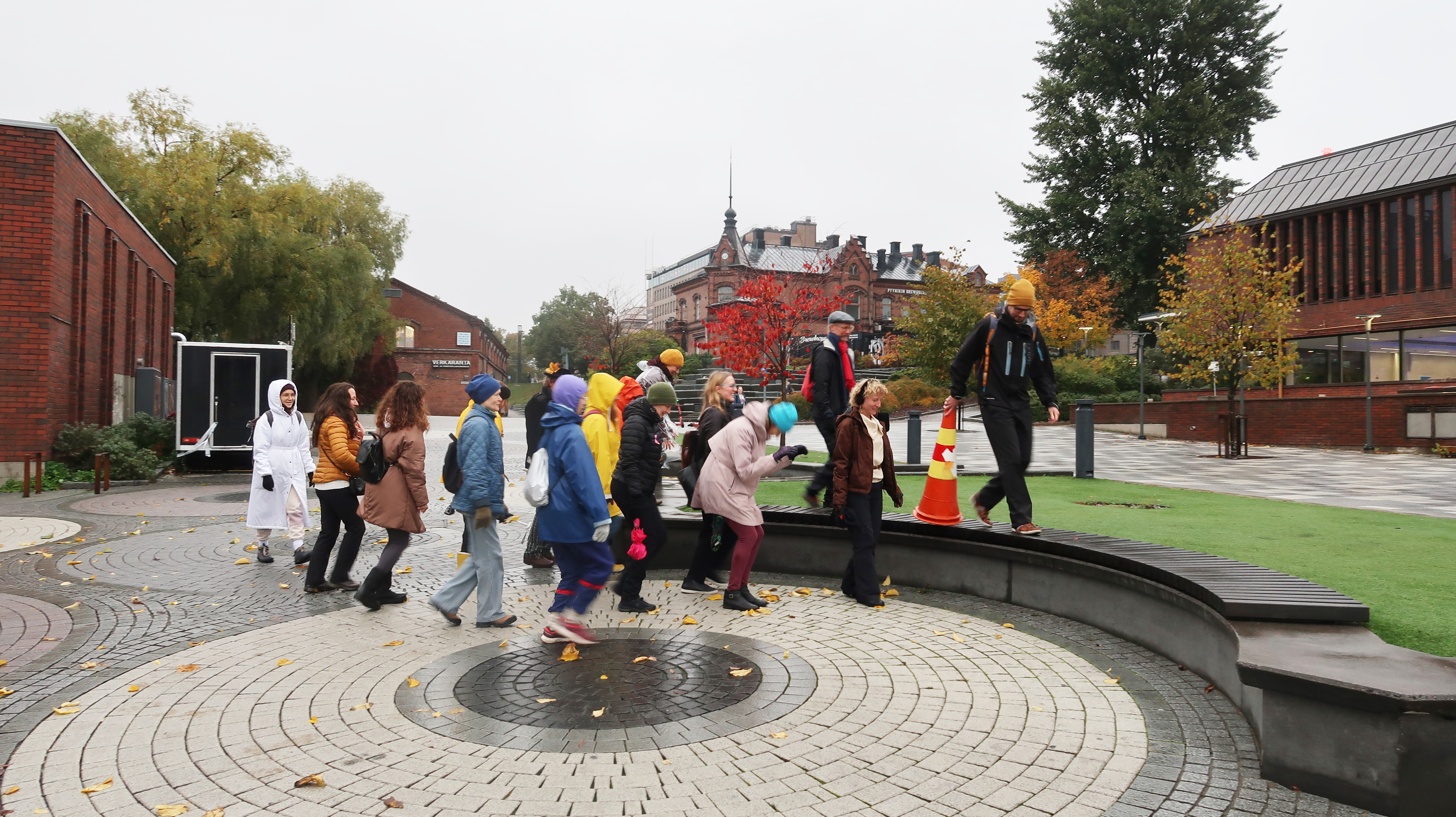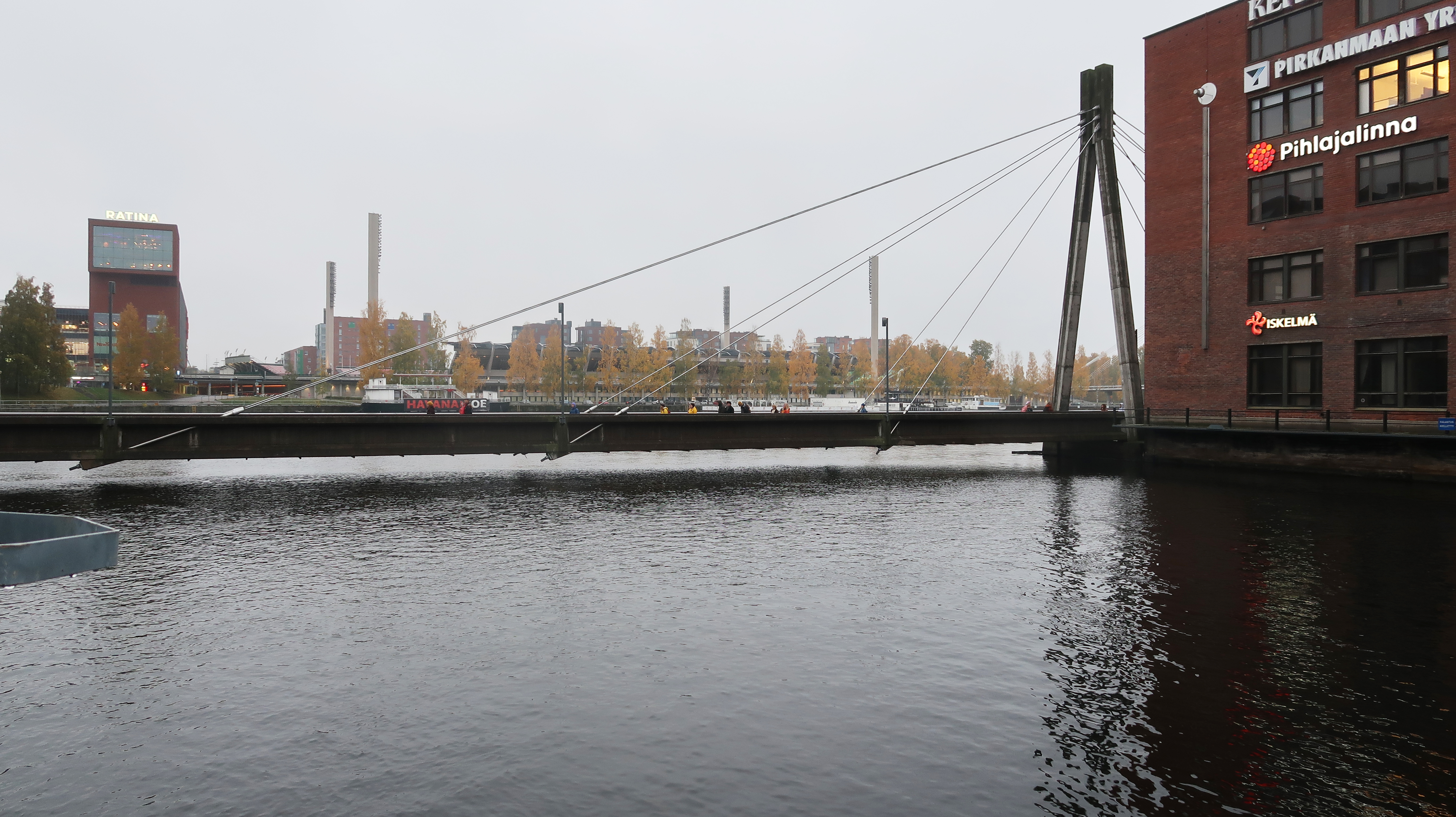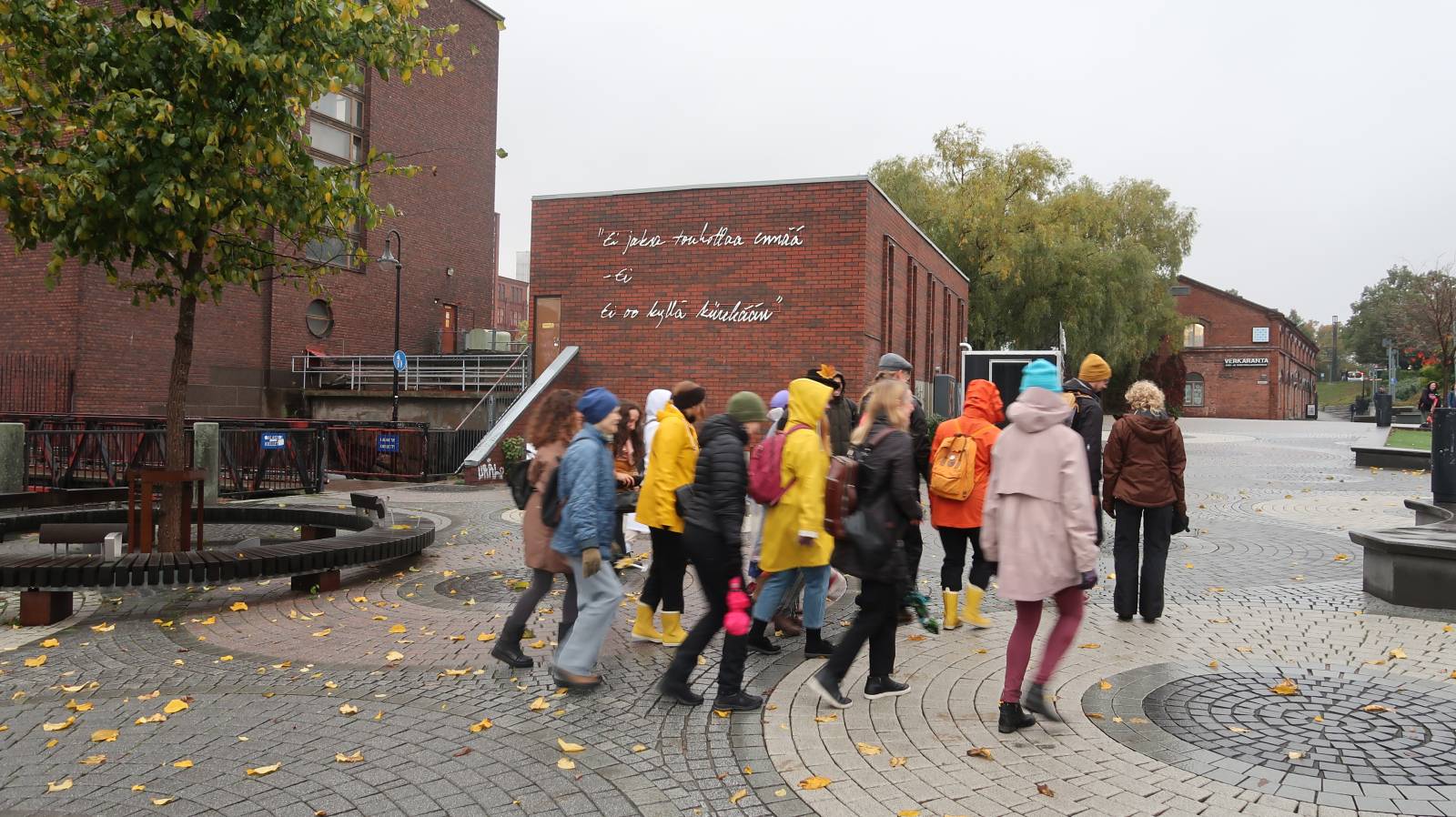On 5 October 2022, the Insurgent Spatial Practices research collective and the fema artist collective were joined by about twenty people to move together around the Kehräsaari area and to pay attention to our embodied experiences. Our aim was to explore what we could learn about urban environments when moving through urban space employing performative methods. Fema artist collective has been experimenting with these methods for years. Since 2018 and together with researchers, they have been searching for ways of embodied norm-bending in urban space in the Tampere area.
We started our journey at the Koskenranta, where we introduced each other, not only with words but also with movement. Then, we settled. Individually and in silence, each of us immersed ourselves in the strange stairs of stone and grass and explored this urban place; some stood still and others moved around; some examined the edges of the stairs while others looked at the sky. Each of us explored our relationship to that space individually yet collectively (Fig.2).

After a few minutes of settling, we gathered and started to flock. Like birds, we moved from the strange stairs towards Koskenranta, following and reacting to each other in improvised ways; moving as a group, sometimes in circles, sometimes stomping, sometimes relinquishing power to follow others, sometimes taking power back to make others move towards us. Flocking was about us in space and where the power of space succumbed to the power of the collective (Fig. 1. & 3).
Then we arrived at the Vuolteensilta, the concrete bridge that connects Koskenranta to Kehräsaari. We got in a straight line, turned around, and started walking backwards towards Kehräsaari (fig. 4). The journey takes a while; it is uncomfortable, not only for those walking backwards but for those seeing us do so; the uncertainty is uncanny and, as one participant put it, it is where one feels most exposed. It is such a simple movement yet so subversive.
Once at Kehräsaari we start seeing. In smaller groups, we fixed our bodies and our gaze towards one direction. Here, it is our eyes the part of our body that moves to find and visualize the mundane as well as the unexpected and it is our mouths the part of the body that moves to voice what the eyes see — objects, nature, people, colours, and shapes — into consciousness.

To conclude our journey, individually, we moved within Kehräsaari towards the Kehräsaari bridge and activated our auditory system. We listened to the contrasts of sounds from one space to the other. Then we gathered at Raina Cafe & Bar, where we were greeted with warm drinks and food, sponsored by STUE. At Raina, we talked about the experience, what we liked most, and what we learned.
So what did we learn?
We learned that our bodies are spaces from where we can draw knowledge about the environment as well as about our relationship to it. It may seem obvious, but it is a fact that is too often neglected. The material substrate of the city tells us so. Cities are often queried employing methods that are disassociated from social and environmental realities; prioritising statistics and blueprints to ‘know’ about a place. The result is a city that is designed and constructed for a certain kind of person and a built environment that very much castigates who moves where and how.
When becoming aware of ourselves in space as bodily beings, a new kind of sensitivity is gained. Most of us noted something new or that we had forgotten about ourselves. The materiality and experiential qualities of the space, associated with different senses, came to the fore and the relationships with other people were accentuated. One of the most valuable learnings was experiencing this sensitivity which aroused an important question: How differently and perhaps more sustainably would we plan and build our cities if we would have this kind of embodied sensitivity truly in mind?
In our journey, we learned that these embodied experiences and ways of querying urban places have the capacity to evoke memories and awaken our senses and raise simple but important questions. As a participant commented, flocking reminded him what it felt like to be a child, to be free and playful using the urban affordances; the material substrate of the city (fig. 3). He wondered when and why he stopped feeling that way.

Others were quick to point out the feeling of comradery and togetherness, even though we didn’t all know each other and many had met for the first time. In moving together, we engendered a sense of belonging and protection and, yes, power! Our bodies moving en masse were able to evoke and awaken a sense of empowerment… empowerment over our bodies but also over urban space and what we can do with both.
But this story and learnings are more than about the materiality of the city; it is also about the social norms of being (in space). People tend to emphasise kinesthetically with each other and try to find common conventional ways of staying when being in the same space. However, a person in an urban space can have different roles: one can be an actor, object, and viewer all at the same time. These (inter)actions create interesting social constructions between people in the space. For many by-passers our workshop was discomforting, as suddenly they were the strange ones, not part of the group exercise, and thus turning without wanting, into objects of gaze and attention without usual kinesthetic support.
In short, on that rainy October day, we were everything but zombies; we were very much present in our bodies and connected to our minds, senses, and consciousness. Hope you join us next time!
Text: Dalia Milián Bernal, Elina Alatalo, and Hanna Kahrola

